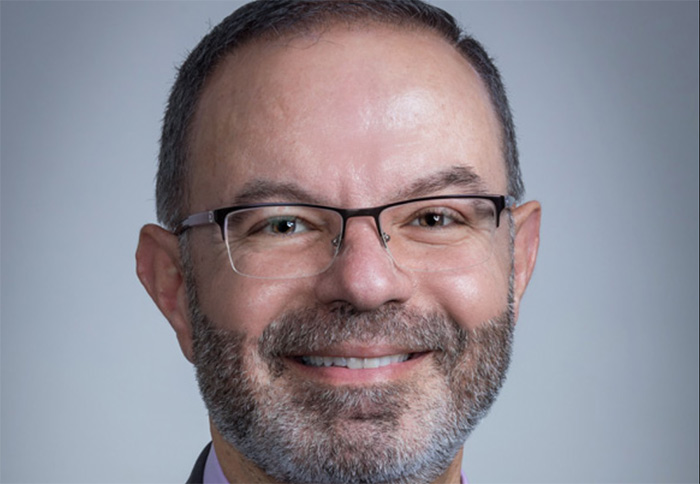Llanusa aims for another term on CUSD school board
Although Steven Llanusa has served on the Claremont Unified School District Board of Education since 2005, he doesn’t feel his work is done so he will be throwing his hat into the ring once more in the November 5 local and municipal election
Mr. Llanusa is the sole incumbent among 5 candidates vying for 3 seats.
Mr. Llanusa is no stranger to stiff competition, having won his first bid for the board in a race with 6 candidates. As a result, he isn’t letting any grass grow under his feet. He has created a website, www.electllanusa.com, and will launch his campaign with a kickoff party this Sunday, September 8 at 2 p.m. at the Claremont Forum, located at 586 W. First St. in Claremont.
For information on the event, which will include refreshments and kids’ activities, call 215-1290.
Along with his previous board service, Mr. Llanusa’s qualifications for the job include experience in education and as a CUSD parent. He is a sixth grade teacher and technology coordinator at Gerald Smith Elementary in Bloomington, a San Bernardino County magnet school with an emphasis on science. And, along with his husband, Claremont pediatrician Glenn Miya, he has 3 sons—Alex, Aaron and Eric—who attended Condit Elementary, El Roble Intermediate and Claremont High School.
An admitted extrovert, Mr. Llanusa is also a member of a number of community organizations, including the UCLA alumni board and the Claraboya Homeowner’s Association, and is an active supporter of the Inland Valley Repertory Theater.
Mr. Llanusa recently took time from his busy schedule to speak with the COURIER about his priorities for the next few years, should he be elected to another term on the board.
He feels it is time for the board to reevaluate attendance boundaries for Claremont elementary schools, creating them as neighborhood boundaries.
“Anyone who has looked at the attendance boundaries has to wonder why it looks like a jigsaw puzzle that has pieces of different schools’ attendance areas completely separated from the neighborhood surrounding the schools,” he explained. “Currently, families have to submit paperwork to attend the elementary school closest to their home—it’s extra effort for the families and extra paperwork for the district. And families [experience] an uneasiness that they might get bumped from their neighborhood school, depending on enrollment.”
Mr. Llanusa emphasized that families should still be able to pursue intradistrict transfers, a choice he values. He feels redrawing the boundaries, however, would reduce the number of unnecessary transfers.
The board has discussed this issue in the past, Mr. Llanusa said, but never pursued it because there were bigger fish to fry. Now that CUSD is financially healthier, however, he feels the board has the luxury to address such details.
Under Governor Jerry Brown’s new local control funding formula, Claremont schools stand to receive a bit more in funding this year, according to CUSD Superintendent of Business Services Lisa Shoemaker. And the passage of the governor’s has halted the cuts that have crippled California schools over the past several years.
With greater solvency, Mr. Llanusa feels the district is in the privileged position of being able to look at some of the cutbacks CUSD has made. One cut Mr. Llanusa would like to see reversed as soon as it is feasible is $300,000 once allocated for transportation to extra-curricular activities. In its absence, athletic teams and academic clubs have had to hold fundraisers, carpool and seek donations to pay for transportation.
The district is also looking at extra income from 2 properties it sold over the past couple of years, the old district office and the current service center, which together have netted the district nearly $13 million.
CUSD needs to address deferred maintenance at a number of sites, according to Mr. Llanusa. While preserving the district’s infrastructure is key, though, he would like to see some of these funds be used to pay down the district’s debt.
For instance, the district took on a large, Certificate of Participation (COP) debt a number of years ago and still owes $7.28 million, which costs CUSD about $565,000 in interest each year.
“If we pay down the debt, that would be a one-time expenditure,” he said. “By relieving the interest on that debt, we would leverage the money into the restoration of programs, positions or facilities.”
As for in-the-classroom goals, Mr. Llanusa would like to see the district continue to narrow the achievement gap that has historically caused a lag in test scores for subgroups like disabled students, English learners and children who are socio-economically disadvantaged.
He is also concerned about the direction given to the district by CUSD stakeholders at a recent study session, suggesting a longstanding graduation requirement be removed. In an August meeting, 4 groups—each consisting of 3 people—advised the district to look at folding the subject matter from a high school class called Technology Skills for the 21st Century into the entire CUSD curriculum, rather than maintaining the course as a graduation requirement.
One of the main reasons is that many CHS students complained that the course impinged on the already jam-packed schedule of Advanced Placement and International Baccalaureate students and—since the class isn’t weighted—adversely affected their GPAs. The committee members at the study session, consisting of board members, CUSD staffers and, in one case, a student, reasoned that the move might also help younger students obtained the technology skills they will need as the district transitions to the Common Core form of assessment.
However, Mr. Llanusa points out that the committee that met several times over the past year to discuss graduation requirements was evenly split on whether to remove or retain the class. He is concerned that the participants in the recent study session did not include the contingent in support of keeping the technology course.
“As the technology coordinator for my school, I know how quickly technology changes,” he said. “So I don’t think the assumption that they’ll pick it up at home or at elementary school is accurate.”
CUSD has much work to be done, but the current school board has plenty to be proud of, Mr. Llanusa said. He feels the board did a top-notch job in hiring Superintendent Jim Elsasser, who is entering his second year on the job, and has worked together with “collaborative collegiality” over the last 16 months.
Mr. Llanusa, who has a reputation for being the questioner on the board, has welcomed the addition of board member Sam Mowbray. He praises Mr. Mowbray for his expertise and says, “It’s great having someone else asking tough questions, too.”
He said the board made a misstep last year by accepting “bad information” from legal counsel and dismissing completely from the district then Sumner principal Frank D’Emilio, who was accused of failing to report an inappropriate incident between 2 students as abuse as well as not being forthcoming about his decision. The board’s vote, which Mr. Llanusa opposed, was eventually reversed amid community outcry and Mr. D’Emilio is now serving as a classroom teacher.
Notheneless, Mr. Llanusa feels the board has, by and large, had a student-first attitude that is exemplified by the board’s decision to add a sixth goal to its mission statement—the cultivation of the whole child through curriculum, policy and enrichment activities—an objective that may not instantly boost test scores but which Mr. Llanusa considers crucial.
“I think when the board makes decisions based on what is best for the students and on community wishes, the result is going to be favorable,” he said.
Profiles on the other CUSD school board candidates will appear in upcoming editions of the COURIER.
—Sarah Torribio
storribio@claremont-courier.com








0 Comments